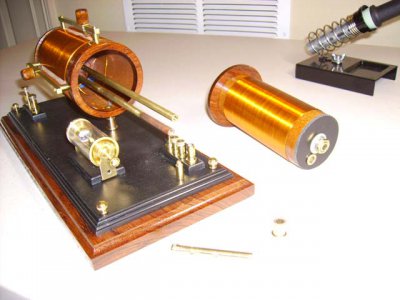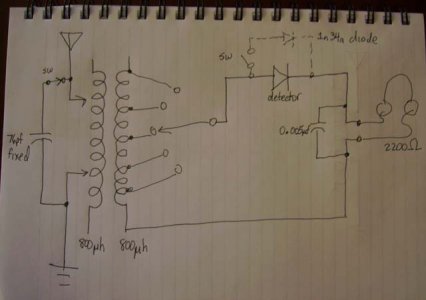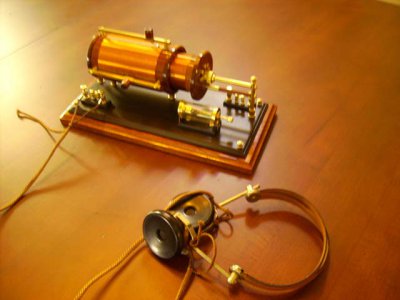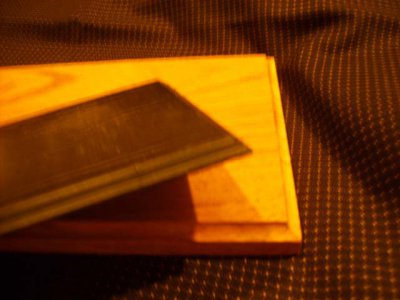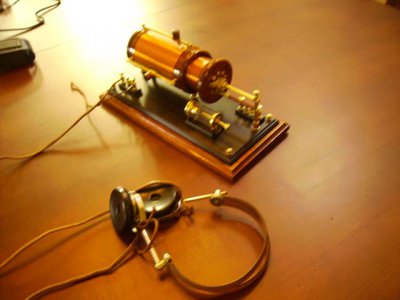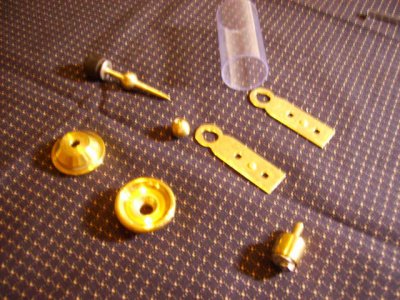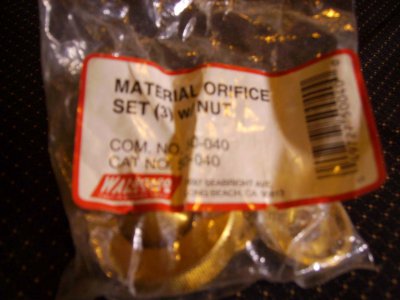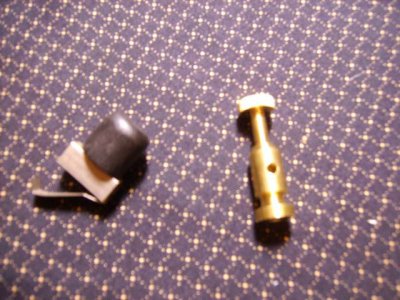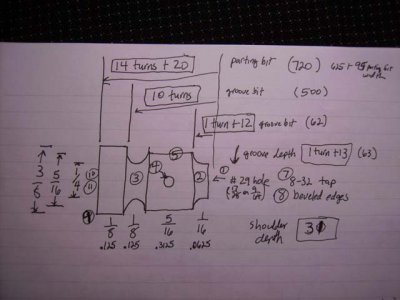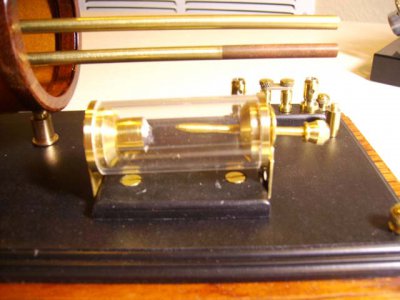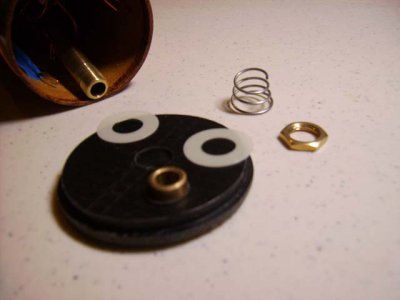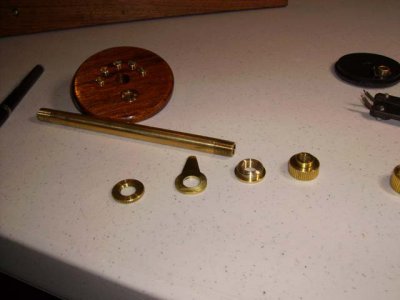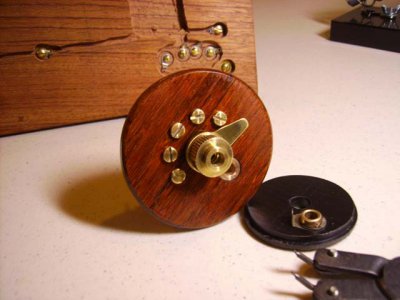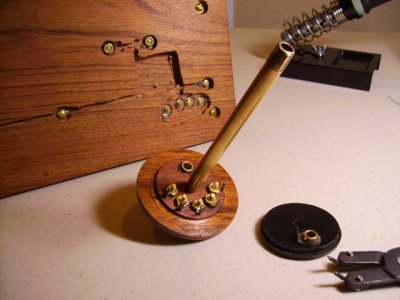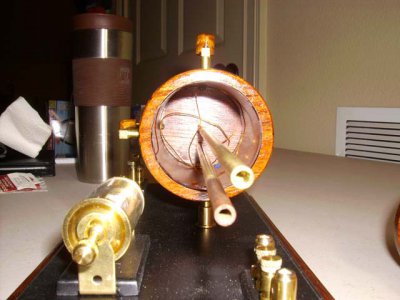Yes, galena crystal (I have a huge rock that I chip pieces off of and set in a melted chunk of solder in a home-made cup).
I'll provide a few pics and also show you what a scavenger I am and how I find stuff that is close and make it into what I need. The plumbing and lamp part sections of your local harware store is your greatest friend.
Base:
The base is 13" x 6" x 3/4" Jatoba with a simple raduis beveled edge (I believe 3/8" round router bit). The black base that sits on top of this is a 12" x 5" x 1/4" piece of delrin with a fancier routed edge. Delrin machines very nicely with woodworking tools, and doesn't melt as easy as plastic.
You'll see in one of the later pics that I routed channels underneath the base to route my wiring so that everything is clean up top.
Coils:
Outer primary coil is 3" phenolic tube (CE) that is 5" long. I wound 138 turns of 22 gauge magnet wire, which made it about 800 microhenries.
Inner secondary coil is 2-1/4" phenolid tube (CE) also 5" long. I wound 180 turns of 24 gauge magnet wire, also making it about 800 microhenries. I tapped this coil every half inch. I used some wood stain to try to get the tubes to match the jatoba wood. Once coils were wound on the tubes, I sprayed about 5 coats of high gloss polyurethane over the whole thing. This helps to keep the windings firmly bonded to the coil tubes.
By the way, you can order the Delrin and the phenolic tube (linen or canvass, LE or CE) from Boedeker Plastics in Shiner, TX (you can get their phone number and email off their website)
More writeup in next thread.
Mark
